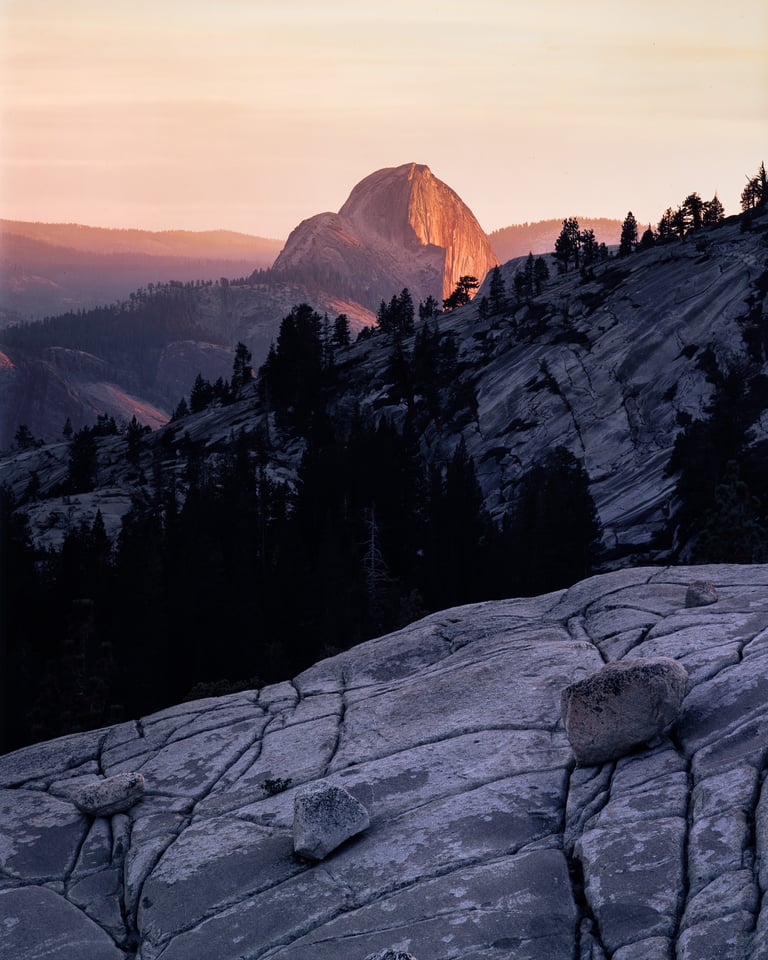العدسات 8 × 10 التي أوصي بها أكثر
The 8×10 Lenses I Recommend the Most
كلما زاد حجم الفيلم، أصبح من الصعب العثور على عدسات تعمل بشكل جيد. بالنسبة لـ 8x10، وهو أكبر تنسيق مشترك للأفلام، يبدو هذا صحيحًا بشكل خاص. إذن، ما الذي يجب أن تبحث عنه في عدسة مقاس 8×10؟ هناك الكثير من العوامل، من التغطية إلى حدة العدسة. واليوم، سأتناول هذه العوامل وأقدم بعضًا من أفضل العدسات مقاس 8 × 10 المتوفرة اليوم.
باعتباري مصورًا للمناظر الطبيعية، أريد أن أوضح أنني لست الشخص الذي يناقش تأثير البوكيه والعرض والخصائص الأخرى التي قد يبحث عنها مصورو الصور الشخصية أو المصورون ذوو التركيز البؤري الناعم. معرفتي بشكل أساسي هي العدسات الأحدث مقاس 8 × 10 المُحسّنة للحصول على مظهر "حديث"، خاصة تلك ذات الطلاء المتعدد، ومساحة واسعة للحركات، وخصائص جيدة للوضوح والتباين. لقد أذكر بعض العدسات القديمة في هذه المقالة، ولكن للحصول على معلومات أكثر وأفضل، يجب عليك البحث في المعرفة الغنية على موقع Largeformatphotography.info لمعرفة ما إذا تمت الإجابة على سؤالك من قبل.
قبل الدخول في توصياتي المتعلقة بالعدسات مقاس 8×10، أود أن أذكر بعض النقاط المهمة التي يجب مراعاتها. أنا أشجعك على قراءة هذه النصائح أولاً من أجل فهم قرارات العدسات التي تنتظرك بشكل أفضل.
The bigger your film size, the harder it is to find lenses that work well. For 8×10, the largest common film format, that rings especially true. So, what should you look for in an 8×10 lens? There are a lot of factors, from coverage to lens sharpness. Today, I’ll go through those factors and introduce some of the best 8×10 lenses available today.
As a landscape photographer, I want to make it clear that I’m not the guy to discuss bokeh, rendering, and other characteristics that portrait photographers or soft-focus shooters may be after. My familiarity is mainly with newer 8×10 lenses optimized for a “modern” look, particularly those with multicoating, extensive room for movements, and good sharpness and contrast characteristics. I do mention some older lenses throughout this article, but for more and better information, you should search the wealth of knowledge on largeformatphotography.info to see if your question has been answered before.
Before getting into my 8×10 lens recommendations, I’d like to mention a few important points for consideration. I encourage you to read these tips first in order to better understand the lens decisions ahead of you.
 Nikkor T 800mm f/12 with 8×10 Fuji Velvia 50
Nikkor T 800mm f/12 with 8×10 Fuji Velvia 50
The 8×10 Lenses I Recommend the Most
كلما زاد حجم الفيلم، أصبح من الصعب العثور على عدسات تعمل بشكل جيد. بالنسبة لـ 8x10، وهو أكبر تنسيق مشترك للأفلام، يبدو هذا صحيحًا بشكل خاص. إذن، ما الذي يجب أن تبحث عنه في عدسة مقاس 8×10؟ هناك الكثير من العوامل، من التغطية إلى حدة العدسة. واليوم، سأتناول هذه العوامل وأقدم بعضًا من أفضل العدسات مقاس 8 × 10 المتوفرة اليوم.
باعتباري مصورًا للمناظر الطبيعية، أريد أن أوضح أنني لست الشخص الذي يناقش تأثير البوكيه والعرض والخصائص الأخرى التي قد يبحث عنها مصورو الصور الشخصية أو المصورون ذوو التركيز البؤري الناعم. معرفتي بشكل أساسي هي العدسات الأحدث مقاس 8 × 10 المُحسّنة للحصول على مظهر "حديث"، خاصة تلك ذات الطلاء المتعدد، ومساحة واسعة للحركات، وخصائص جيدة للوضوح والتباين. لقد أذكر بعض العدسات القديمة في هذه المقالة، ولكن للحصول على معلومات أكثر وأفضل، يجب عليك البحث في المعرفة الغنية على موقع Largeformatphotography.info لمعرفة ما إذا تمت الإجابة على سؤالك من قبل.
قبل الدخول في توصياتي المتعلقة بالعدسات مقاس 8×10، أود أن أذكر بعض النقاط المهمة التي يجب مراعاتها. أنا أشجعك على قراءة هذه النصائح أولاً من أجل فهم قرارات العدسات التي تنتظرك بشكل أفضل.
The bigger your film size, the harder it is to find lenses that work well. For 8×10, the largest common film format, that rings especially true. So, what should you look for in an 8×10 lens? There are a lot of factors, from coverage to lens sharpness. Today, I’ll go through those factors and introduce some of the best 8×10 lenses available today.
As a landscape photographer, I want to make it clear that I’m not the guy to discuss bokeh, rendering, and other characteristics that portrait photographers or soft-focus shooters may be after. My familiarity is mainly with newer 8×10 lenses optimized for a “modern” look, particularly those with multicoating, extensive room for movements, and good sharpness and contrast characteristics. I do mention some older lenses throughout this article, but for more and better information, you should search the wealth of knowledge on largeformatphotography.info to see if your question has been answered before.
Before getting into my 8×10 lens recommendations, I’d like to mention a few important points for consideration. I encourage you to read these tips first in order to better understand the lens decisions ahead of you.
 Nikkor T 800mm f/12 with 8×10 Fuji Velvia 50
Nikkor T 800mm f/12 with 8×10 Fuji Velvia 50









تعليق